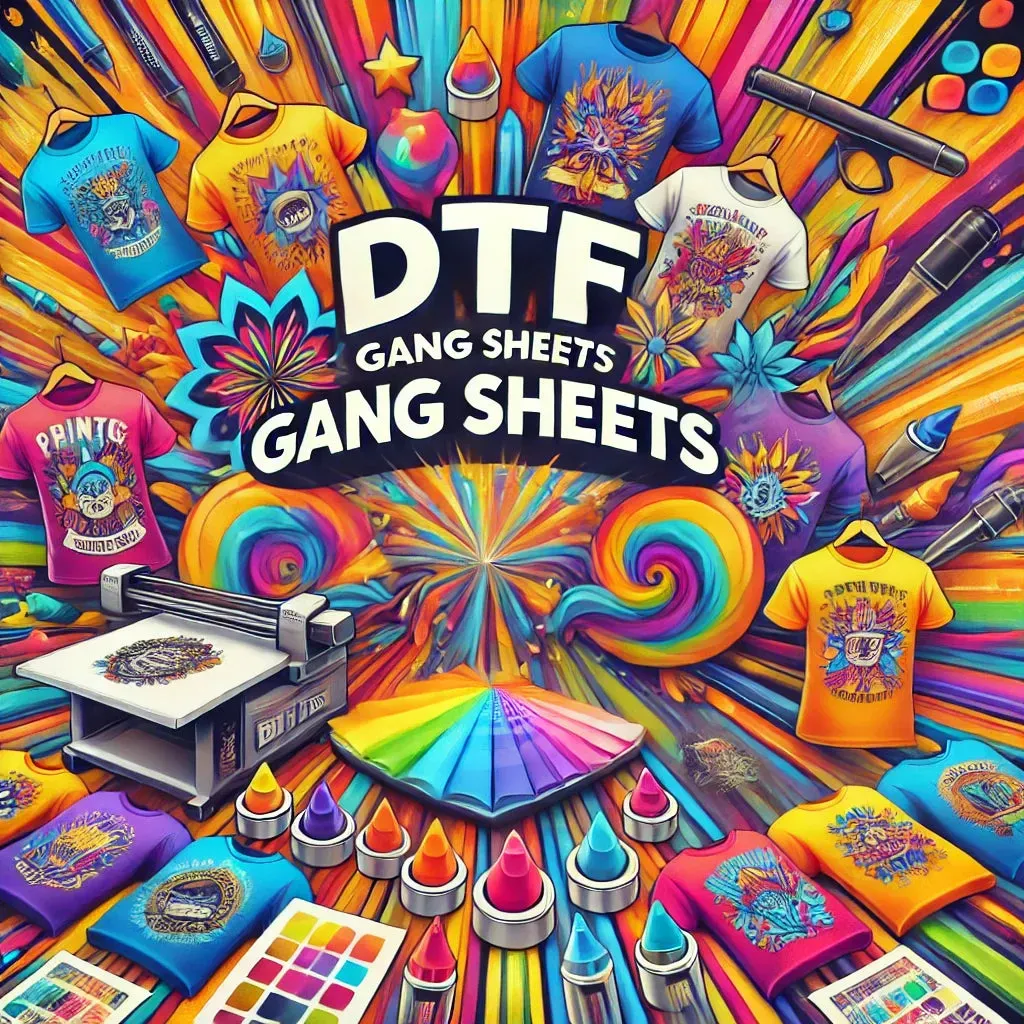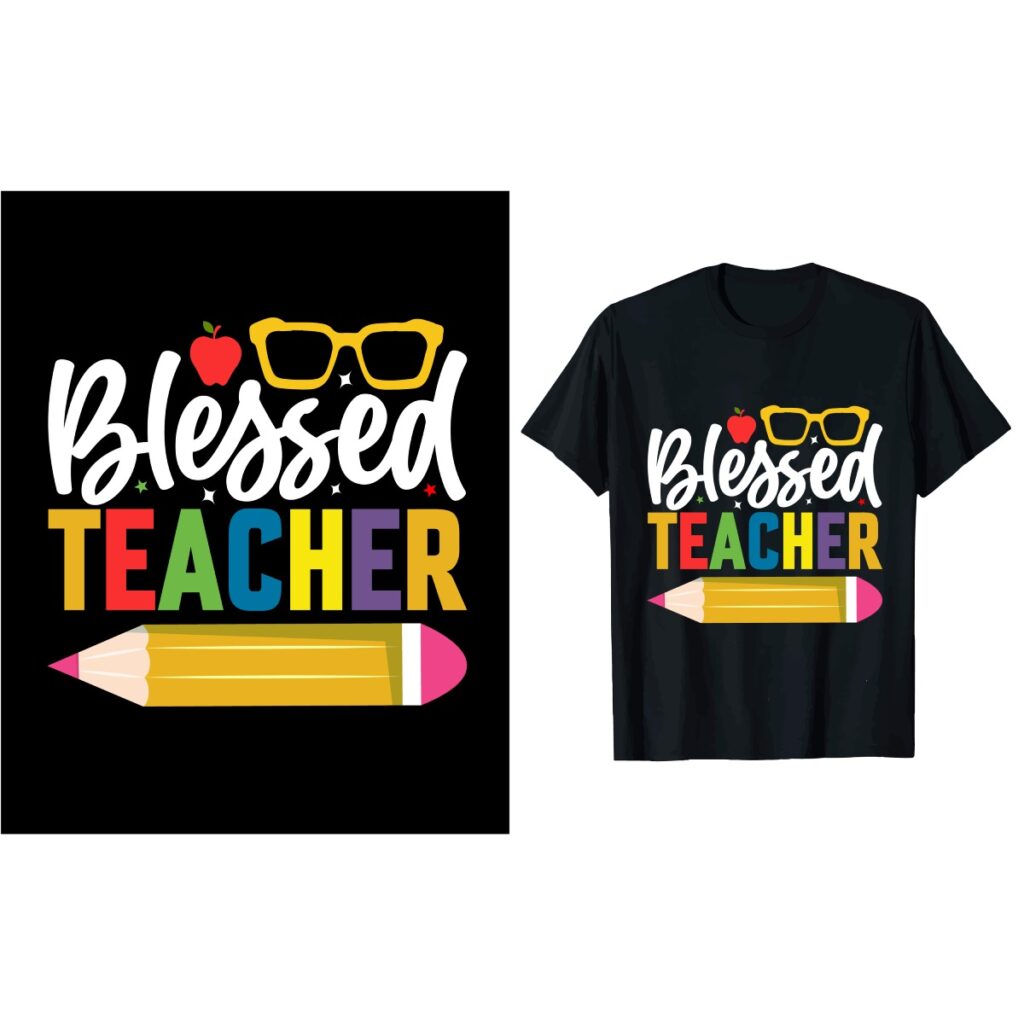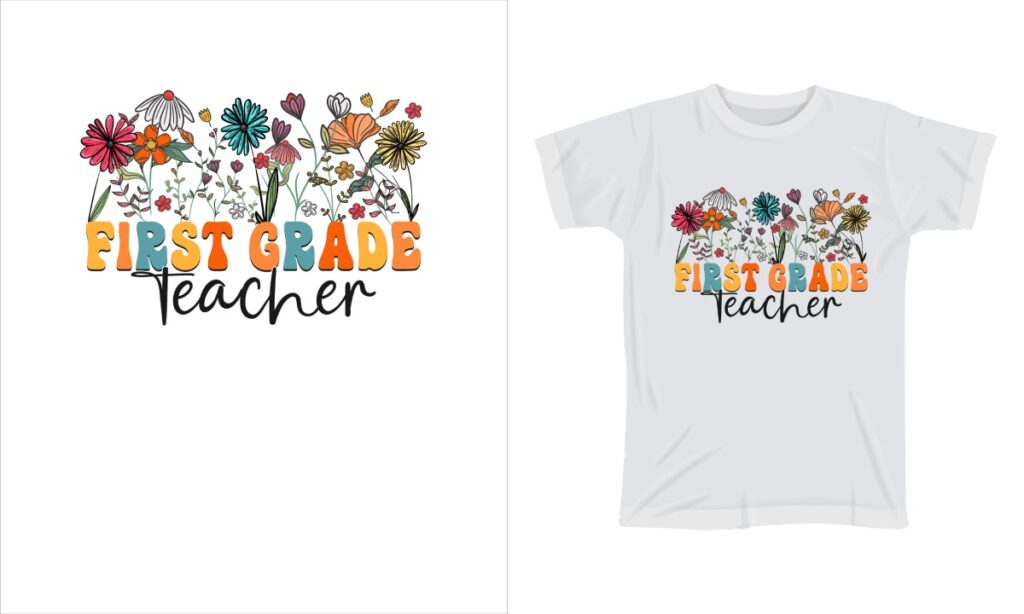DTF Gangsheets are transforming the landscape of custom garment printing by offering an innovative solution for applying multiple designs onto a single film sheet. This method of Direct to Film (DTF) printing not only maximizes material utilization but also significantly boosts productivity in graphic application. As fashion trends evolve, the importance of quick and efficient graphics has never been more vital, making DTF Gangsheets an essential tool for apparel decoration. The versatility of this technique allows printmakers to work seamlessly across various fabric types, ensuring vibrant and long-lasting designs. In this guide, we will explore the ins and outs of DTF Gangsheets, providing tips and techniques aimed at elevating your graphic design skills for stunning apparel results.
When it comes to fabric printing, the use of Direct to Film sheets is gaining attention as a preferred method. The approach, commonly referred to as DTF printing, enables designers to place several unique graphics onto a singular transfer medium. This not only streamlines the printing process but also enhances the overall quality of the finished products. In today’s fast-paced market, where quick turnaround times are essential, mastering this printing technique opens doors to endless possibilities in custom apparel creation. By delving into the realm of DTF transfer sheets, we will uncover strategies and tips for effective graphic design that cater to the needs of modern garment printing.
What You Need to Know About DTF Printing
DTF printing stands at the forefront of technological advancements in custom garment printing. Unlike traditional methods, it uses a specialized film as a medium to transfer images onto textiles, making it both an effective and versatile option. DTF not only allows for the bright and eye-catching colors but also offers flexibility across a range of fabric types, including cotton and blends. By leveraging this method, businesses can meet the diverse demands of their clientele, whether they require small-scale prints for niche markets or larger runs for promotional products.
The process begins by printing a design onto a polyethylene terephthalate (PET) film, followed by the application of a powder adhesive and heat transfer. This combination ensures strong adhesion of the ink to the fabric, giving rise to durable, high-quality images that resist fading and peeling over time. For businesses involved in apparel decoration, understanding DTF printing can open avenues for unique creations that stand out in a crowded marketplace.
Mastering DTF Gangsheets for Efficient Production
The concept of gangsheets is central to maximizing efficiency in the DTF printing process. By grouping multiple designs on a single sheet, printers can optimize material usage and significantly save on costs. This streamlined approach not only accelerates production times but also enables businesses to respond rapidly to customer demands, turning around orders much quicker than traditional methods might allow. Achieving mastery in creating effective gangsheets involves planning designs meticulously and utilizing software tools like Adobe Illustrator.
Design layout optimization plays a crucial role here. Grouping smaller graphics efficiently while maintaining appropriate spacing to prevent misalignment is imperative. Testing various configurations can reveal the most material-efficient layouts. By implementing these practices, businesses can ensure they are making the most out of their printing resources while delivering high-quality designs that meet customer expectations.
Effective Graphic Design Tips for DTF Printing
When venturing into DTF printing, mastering graphic design principles can set your work apart. Understanding color management, for instance, is key. This involves knowing how to choose the correct color modes – with RGB suited for digital platforms and CMYK appropriate for printing. Proper color management ensures designs pop and retain their vibrancy post-printing. Additionally, selecting high-resolution images (300 dpi or more) guarantees that the final output is crisp and professional. Poor image quality can lead to pixelation and a tarnished brand reputation.
Beyond color and resolution, incorporating texture and layered effects can elevate your designs. Textures can add depth and interest, making your apparel more appealing to customers. Utilizing graphic design tips effectively, such as paying attention to balance and contrast within your compositions, will ensure your printed designs not only catch the eye but also stand the test of time in terms of durability and appeal.
Technical Aspects of DTF Printing You Should Know
Focusing on the technical elements of DTF printing is essential for anyone serious about entering the custom garment market. Selecting the right inks can have a profound impact on the final product. Water-based inks are becoming increasingly popular due to their environmentally friendly nature and exceptional color vibrancy. These inks not only provide stunning visuals but also ensure longevity against wear and tear, making them ideal for frequently washed garments.
Curing time and techniques during the printing process also demand careful consideration. Proper heat press settings, such as maintaining a uniform temperature of 320°F and adjusting pressure according to fabric thickness, are vital for ensuring the transfer adheres effectively. Fine-tuning these elements through trial and error can lead to consistent outcomes, helping to establish a reputation for quality in DTF printing.
Heat Press Application Techniques for DTF Designs
The application of DTF gangsheets to fabrics requires precision and an understanding of heat press technology. Preheating is a critical step that should not be overlooked. Depending on the fabric type, ensuring proper heat settings can make the difference between a successful transfer and a damaged garment. Additionally, maintaining even pressure during application is crucial for avoiding discrepancies in the transfer process, ensuring each design adheres evenly across the material.
Monitoring your equipment and adapting to different fabric types also plays a significant role in achieving a quality finish. For example, lighter fabrics may require different settings compared to heavier ones. By taking the time to understand the nuances of your heat press and the specific requirements of DTF printing, you can significantly enhance the quality of your printed designs and their overall appeal to customers.
Trends Shaping the Future of DTF Printing
The landscape of DTF printing is characterized by rapid evolution and increasing consumer demand for customized products. As more businesses recognize the value of personalization in apparel, trends such as eco-friendly inks and sustainable practices are gaining momentum within the industry. Market research continuously indicates a shift towards more responsible and innovative printing technologies, driving the necessity for improved methods in achieving excellent output.
Furthermore, advancements in printing technology, such as faster printing speeds and higher resolution outputs, are on the rise. These developments are making DTF printing not only more accessible but also more efficient, allowing for greater scalability within custom garment printing operations. Staying abreast of these trends is essential for professionals looking to leverage market opportunities and to establish a competitive edge.
Frequently Asked Questions
What are DTF gangsheets in custom garment printing?
DTF gangsheets refer to a method in custom garment printing where multiple designs are printed on a single sheet of Direct to Film (DTF) film. This approach optimizes the use of materials and enhances productivity while allowing for vibrant, high-quality graphics that can be easily transferred to various fabric types.
How do I create an effective layout for my DTF gangsheets?
To create an effective layout for DTF gangsheets, use design software like Adobe Illustrator or CorelDRAW. Group smaller designs closely while leaving adequate space for cutting. Experiment with different configurations to maximize the use of space and ensure optimal alignment during the printing process.
What are the key benefits of using DTF printing and gangsheets together?
The combination of DTF printing and gangsheets offers several benefits, including cost efficiency by reducing material waste, increased production rates by printing multiple designs at once, and the ability to produce vibrant, long-lasting graphics across a variety of fabrics.
What are the important color management tips for DTF printing on gangsheets?
For successful color management in DTF printing, ensure you’re using the correct color mode. RGB is for digital displays while CMYK is used for printing. Adjust your designs accordingly to maintain vibrancy, and use high-resolution images (at least 300 dpi) for the best output quality.
What temperature and pressure settings should I use for heat pressing DTF gangsheets?
When applying DTF gangsheets with a heat press, set the temperature to around 320°F (160°C) and press for 15-20 seconds. Adjust the pressure based on fabric thickness to ensure an even transfer of your designs across all areas of the fabric.
How can I ensure the longevity of my designs printed on DTF gangsheets?
To ensure the longevity of designs printed on DTF gangsheets, choose high-quality water-based inks known for their durability. Additionally, follow proper curing techniques post-application, as well as care instructions during washing to maintain the appearance and integrity of the graphics.
| Key Point | Description |
|---|---|
| DTF Printing | A modern printing method using PET film and powder adhesive. |
| Benefits of DTF Printing | Versatile, high-quality, and efficient for garment customization. |
| Design Layout Optimization | Maximize use of sheets by grouping smaller designs and ensuring proper spacing. |
| Color Management | Use RGB for digital and CMYK for printing to optimize colors. |
| Print Resolution | Utilize high-resolution images (300 dpi) for clarity. |
| Ink Selection | Water-based inks are recommended due to environmental benefits and vibrancy. |
| Curing Techniques | Proper heat press settings (320°F for 15-20 seconds) are crucial for adhesion. |
| Market Trends | The growing demand for customization and advancements in printing technology. |
Summary
DTF Gangsheets are a pivotal element in mastering the art of custom apparel printing. By leveraging the unique advantages of Direct to Film printing, including its versatility and efficiency, you can produce high-quality graphics that are not only visually appealing but also durable. Understanding how to optimize layouts, manage colors effectively, and select the right materials will significantly enhance your printing outcomes. Additionally, staying informed about market trends ensures you remain competitive in this rapidly evolving industry. With the insights from this comprehensive guide, you are well-equipped to excel in the dynamic field of DTF printing.



